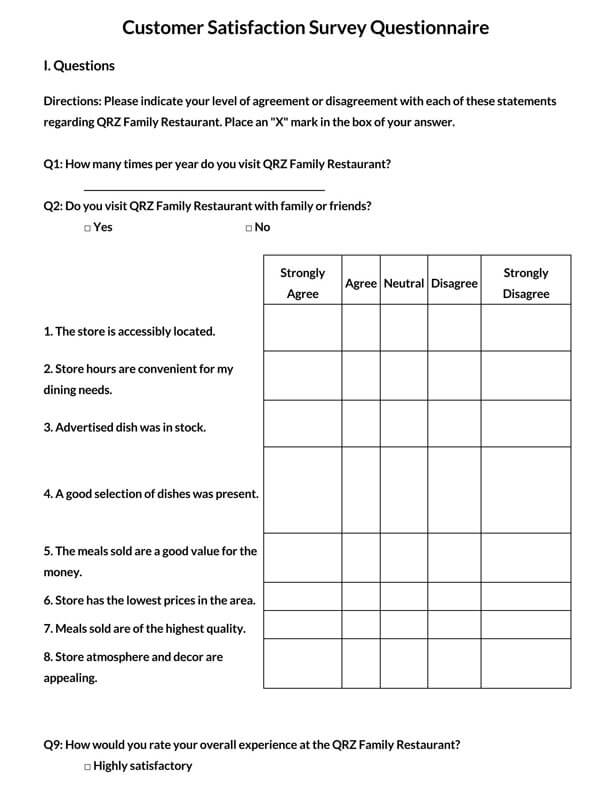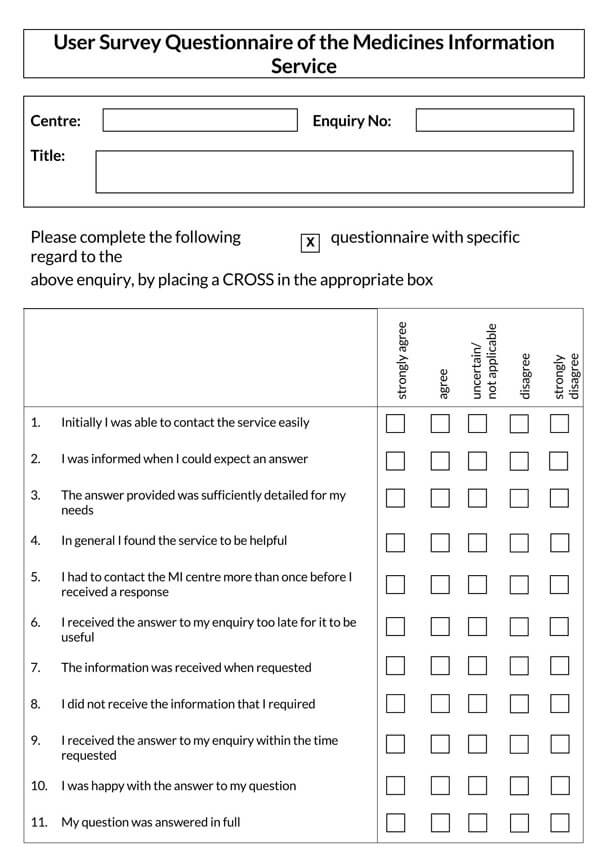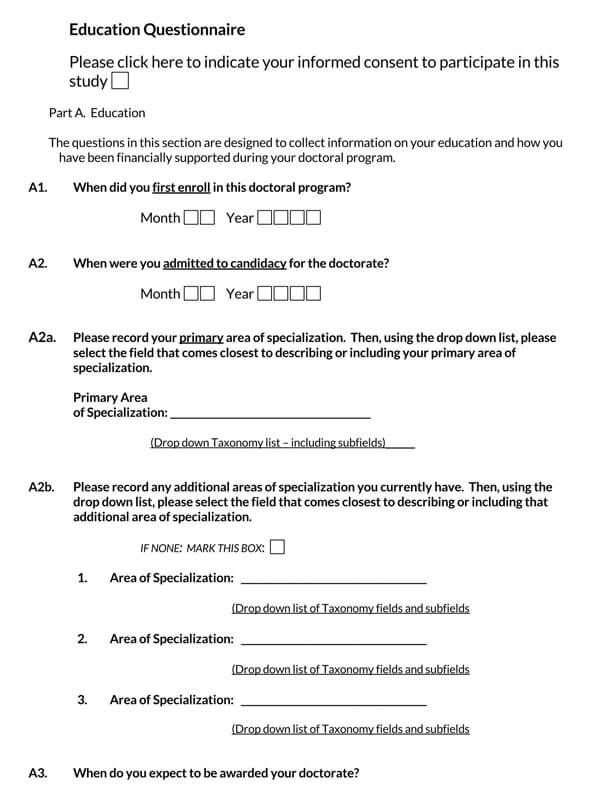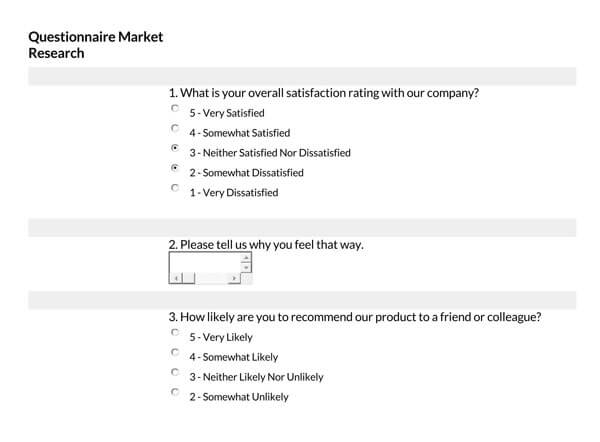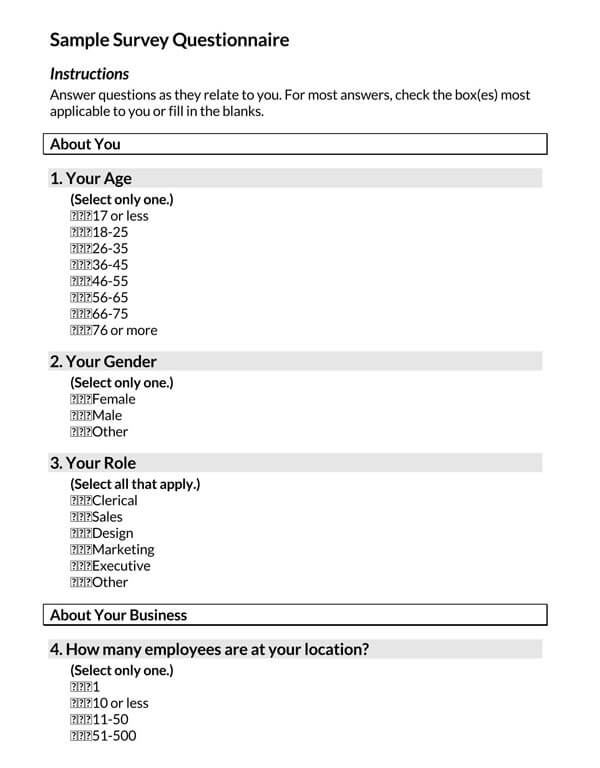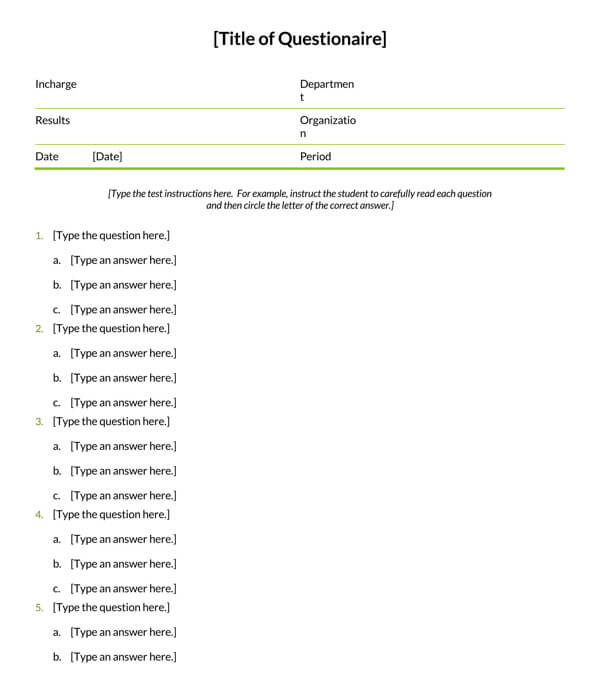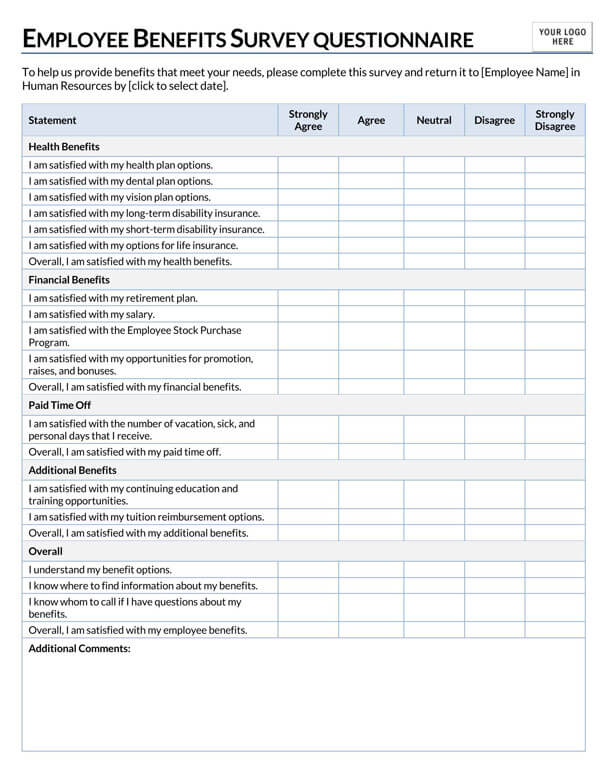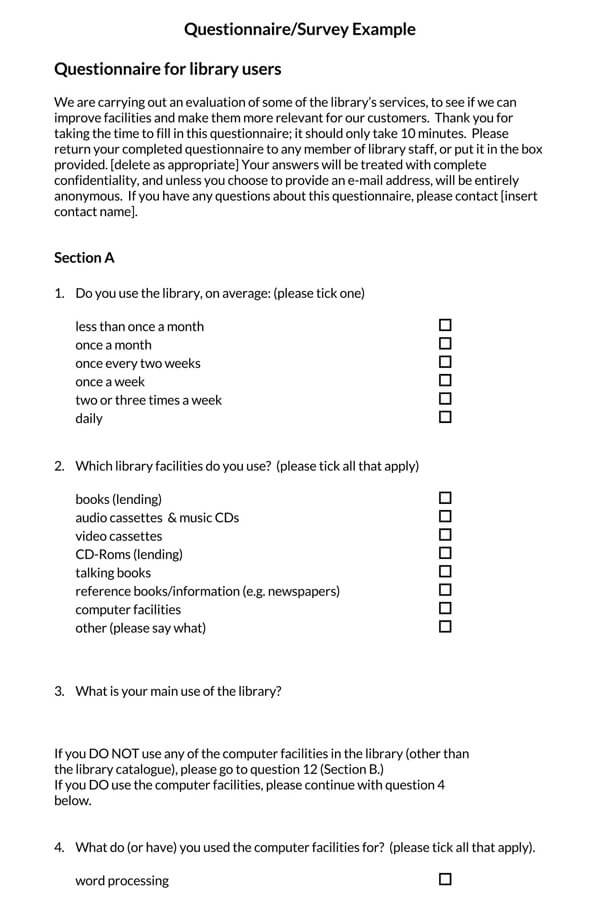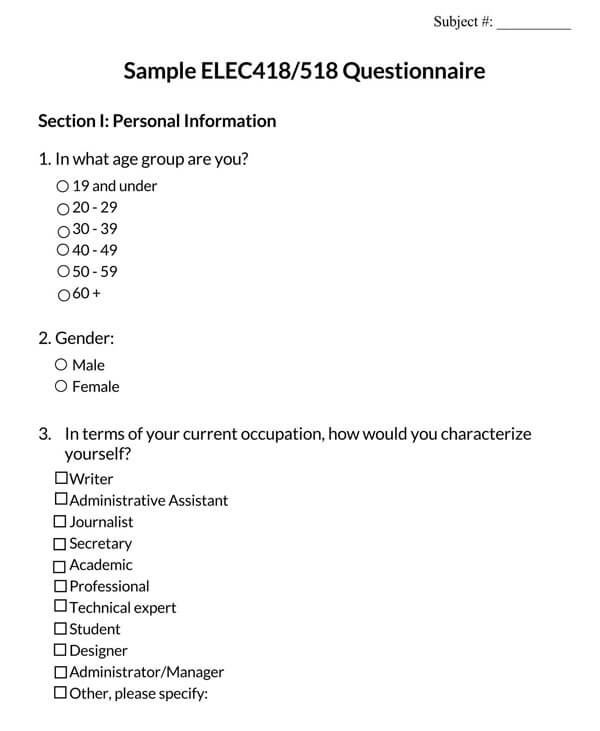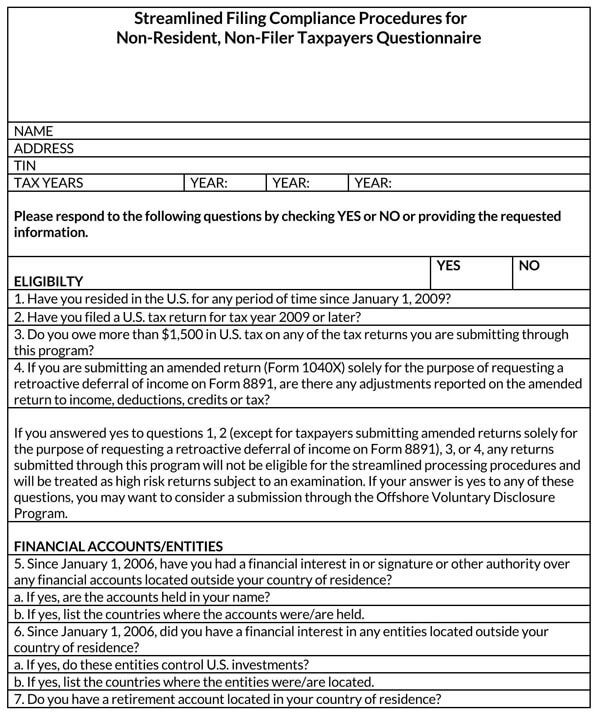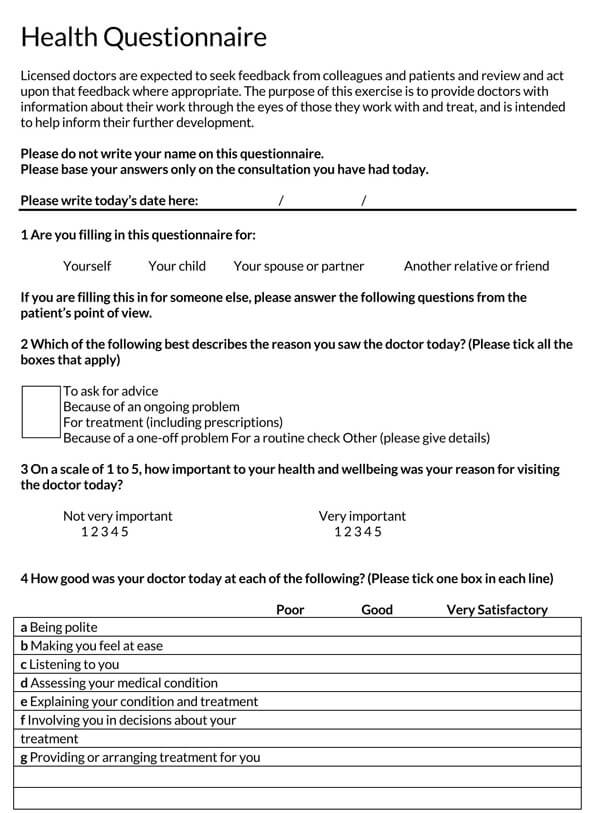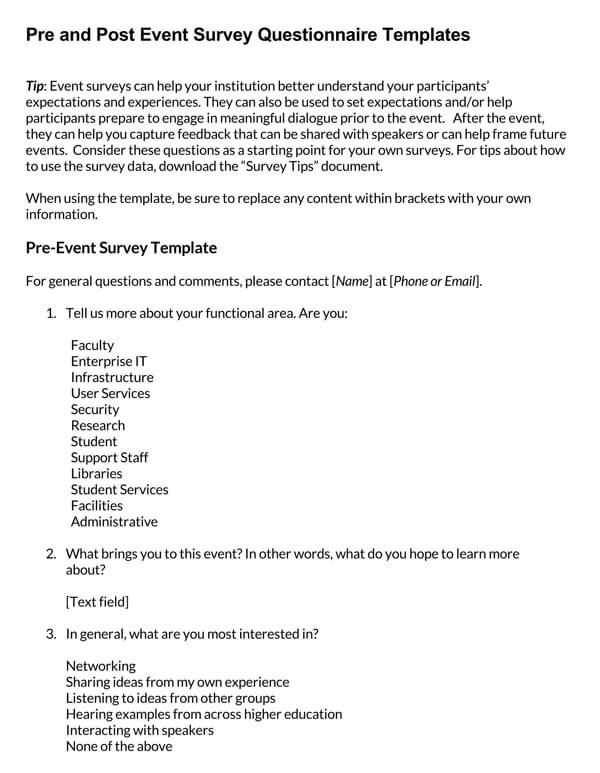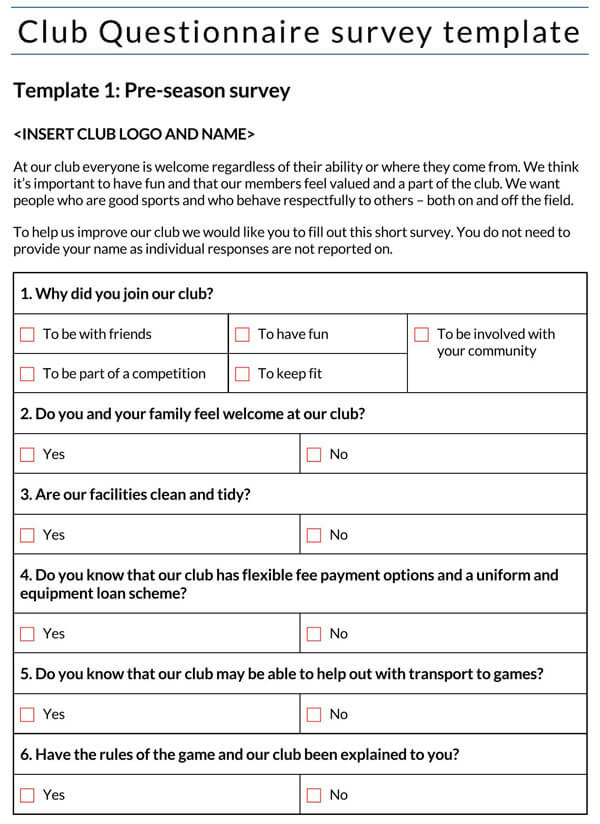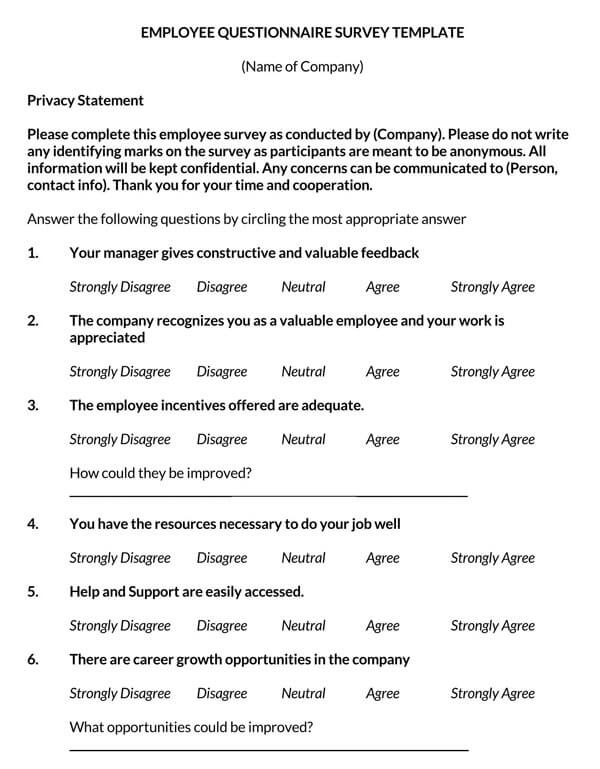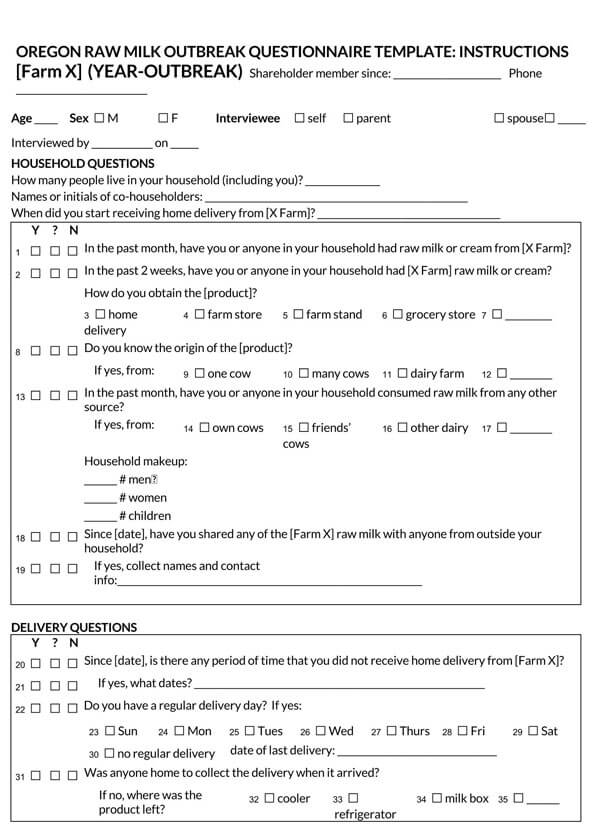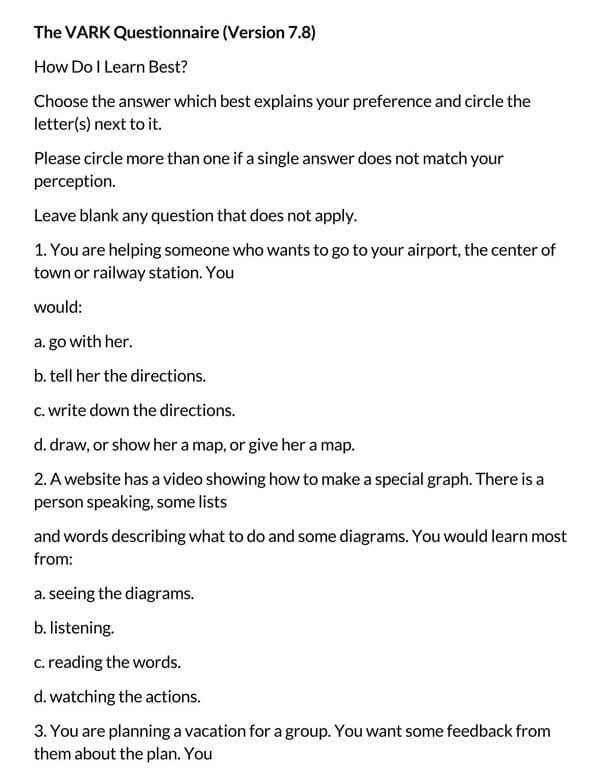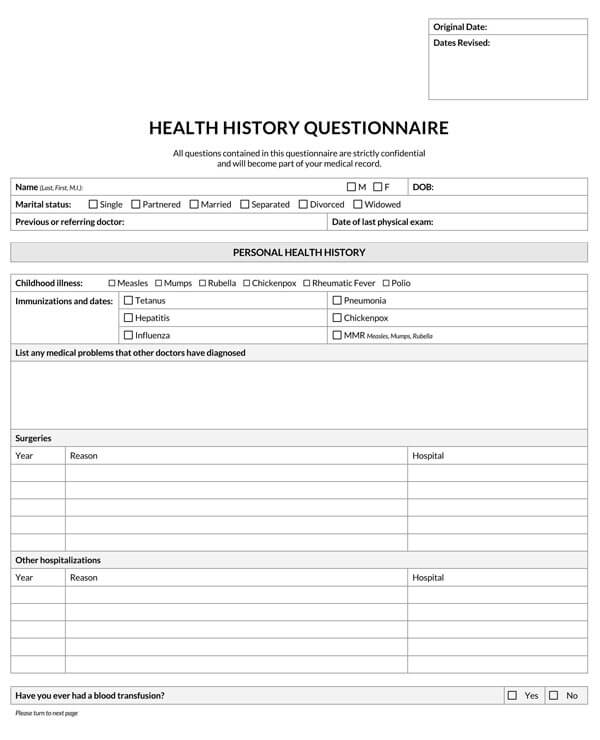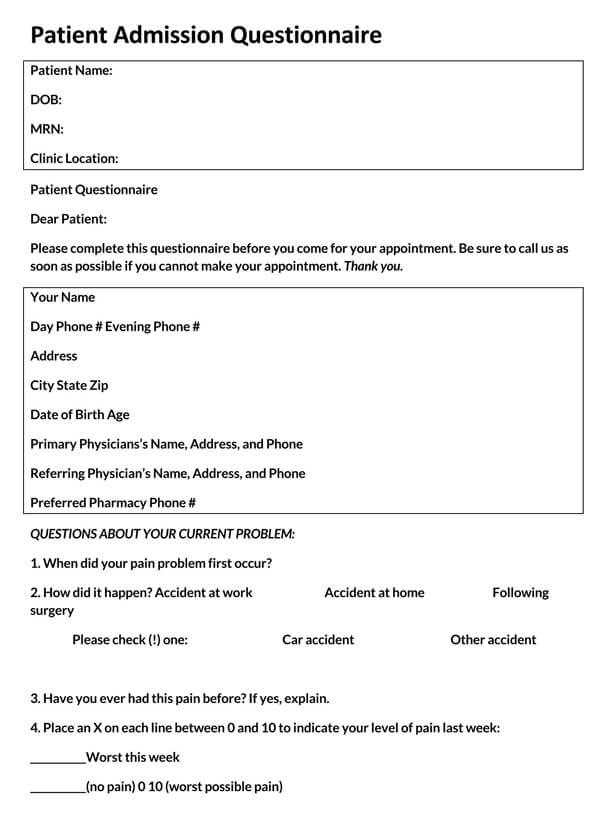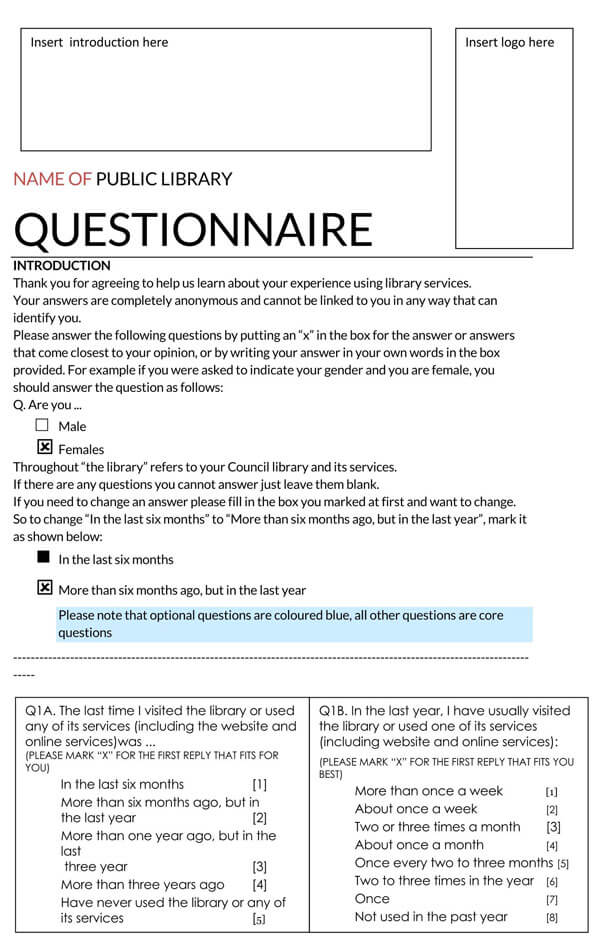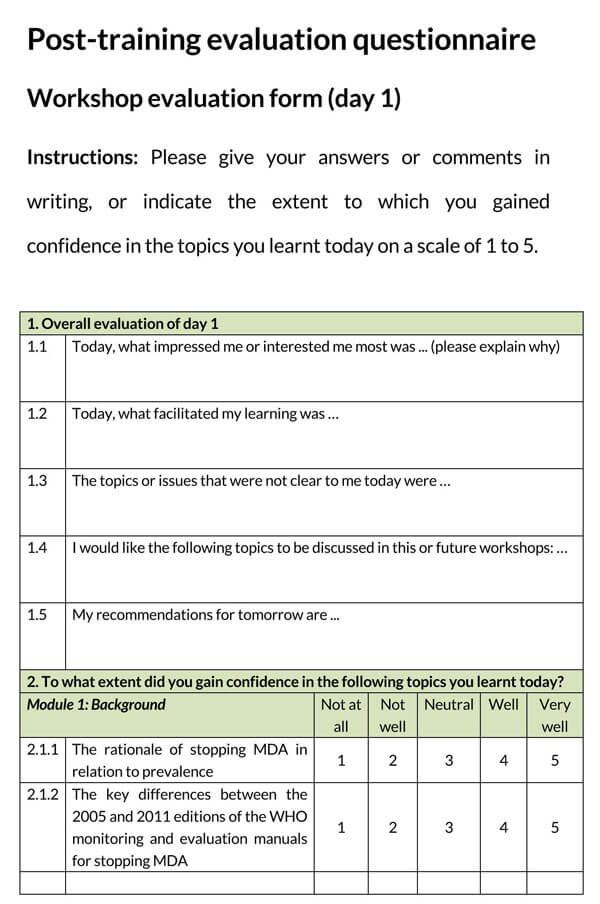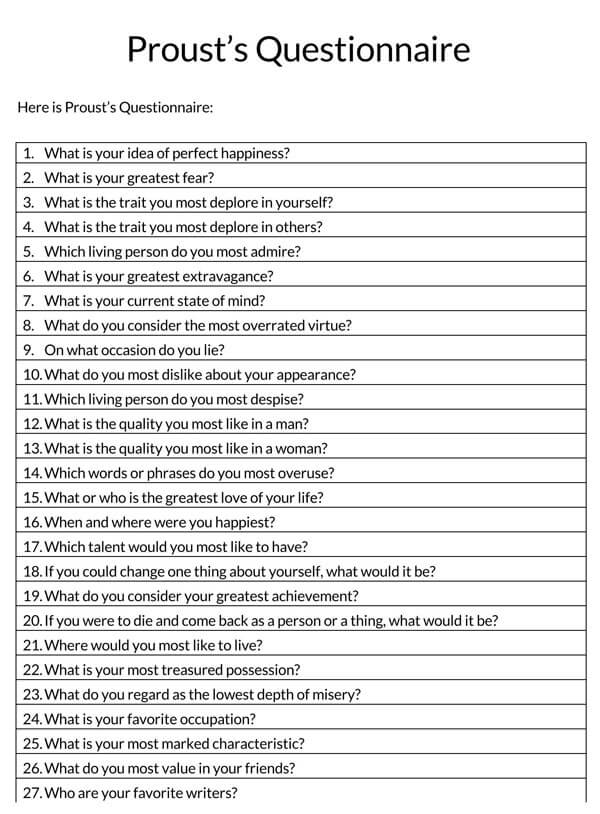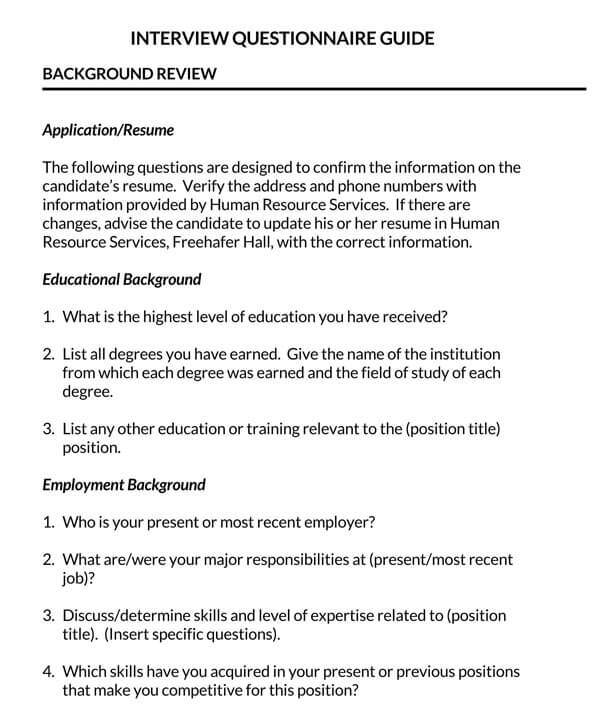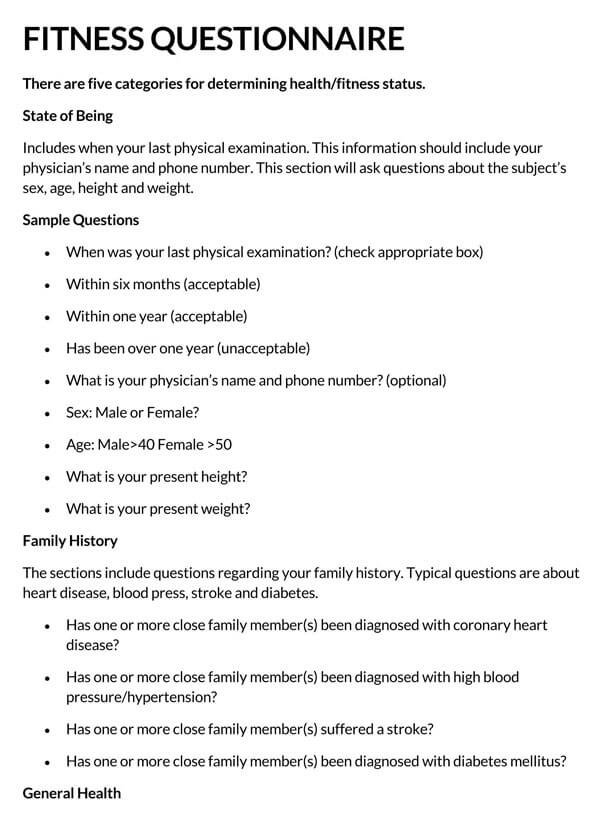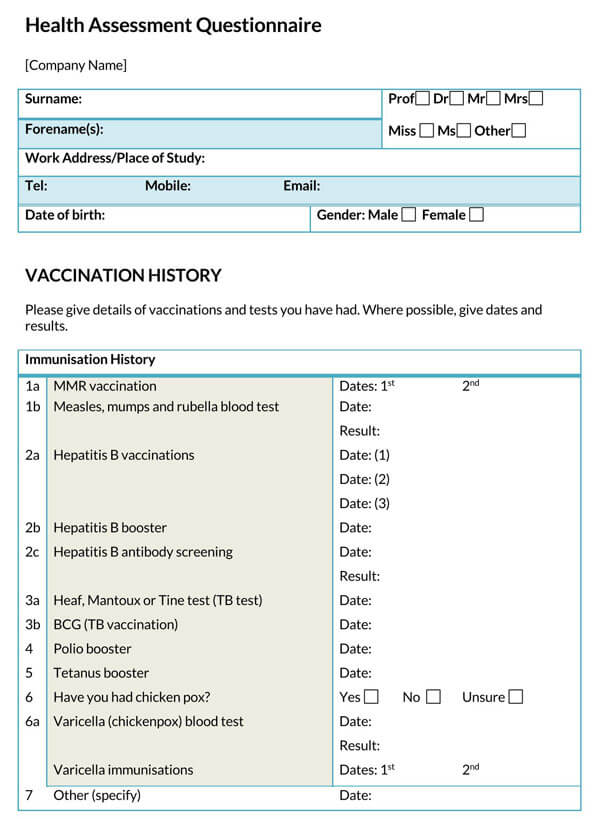A Questionnaire is an essential research evaluation tool developed by the Statistical Society of London in 1838. It comprises a range of close-ended or open-ended questions circulated to customers or respondents to obtain their feedback on the services or products of the company for improvement.
Consumers’ needs and preferences keep changing, which implies that companies keep adjusting to contemporary traits inside the market. Businesses use questionnaires to identify these changes in customer needs to highlight areas of improvement.
A Questionnaire Template, which is a form prepared to conduct such research by companies or organizations contains closed-ended questions on it that are limited to yes or no answers, while open-ended questionnaire questions allow respondents to explicitly explain their feedback or concerns.
Questionnaires or questionnaire templates differ depending on their purpose, listed below are some examples of questionnaires.
- Customer satisfaction questionnaire
- Student survey questionnaire
- Healthcare management questionnaire
- Nursing and safety survey questionnaire
- Public health satisfaction survey
Free Templates
Following are some free downloadable questionnaire templates for your ease:
Questionnaire Overview
The main purpose of a questionnaire is to fix errors to attract new customers and maintain existing ones, by identifying areas of weaknesses in the products or services offered by a company, through feedback from customers for improvement.
Advantages of a questionnaire
A questionnaire is a useful business review tool with many significant benefits which include promoting the growth and reputation of a business in the market.
Following are some major advantages of using a questionnaire or questionnaire template in order to conduct evaluative research;
- A business can maintain a good reputation and relationship with their customers by incorporating their customers’ needs in the products and services they provide, which is made possible by the review concerns raised by customers through the circulation of questionnaires.
- Companies that use questionnaires in market research are bound to grow and widen their market share because of the positive impact they put on their customers and by providing the market with what it needs hence more sales.
- A questionnaire is vital for eliminating errors and reducing losses incurred for developing products and services that do not correspond with the target market. A questionnaire is used during the service and product design process to align the provisions of a business with the needs and preferences of customers based on the review remarks highlighted by the respondents in the questionnaires.
- Apart from being a resourceful tool to businesses, a questionnaire significantly benefits customers by allowing them to express their thoughts about the provisions of a company, to suggest areas of improvement for them to enjoy the products and services offered and get value for their money.
Difference Between Questionnaire and a Survey
A questionnaire is often confused with a survey, but they are different concepts as depicted in the comparison table below;
| Questionnaire | Survey |
| A questionnaire purposely serves as a research tool comprising of a set of open-ended and closed-ended questions aimed at obtaining feedback from target research respondents | A survey on the other hand is a research method or process of gathering and evaluating research data from various predetermined respondents about various issues or topics. |
| A questionnaire is specific to its respondents and hence it is conducted on the target audience, thus considered cheaper and faster means to obtain relevant review/information. | A survey is conducted on a general preset audience hence making the process expensive and time-consuming sorting through relevant feedback. |
| Questionnaires are often closed-ended and objective | Surveys mostly consist of both open-ended and close-ended questions that are both subjective and objective. |
Prominent Characteristics of the Questionnaire
Questionnaires feature characteristics or attributes such as uniformity, exploratory and tend to follow a certain question sequence make them stand out from the other ways of collecting data.
The following are critical characteristics of an effective questionnaire or questionnaire template which is used to conduct research:
Uniformity
Questionnaires are uniform in terms of the number and type of questions asked in each form distributed to all respondents, to facilitate consistency in data collection and promote a greater focus on the research topic.
Exploratory
Questionnaires are focused on getting as much insight as possible from the target respondents; hence provide an opportunity for respondents to answer the pre-set questions as elaboratively as possible by creating open-ended questions. Closed-ended questions limit the range of responses gathered by the questionnaire hence it is advisable to use open-ended questions.
Question sequence
Questionnaires portray an intentional question sequence aimed at gathering a substantial range of responses. The question sequence includes simple warm-up questions that require effortless factual answers, transition questions that request the permission of respondents to proceed to the next step, challenging questions that require the respondent to think or reflect, skip questions that are answered based on their application to the respondent like “the ages of their siblings”, and classification questions confirm to the categorization of the questions that range from the simple to the more complex questions.
Types of Questionnaires
There exist mainly two types of questionnaires namely structured and unstructured questionnaires.
These two categories of questionnaires differ in terms of their functions as described below;
Structured questionnaire
A structured questionnaire refers to a questionnaire that adheres to a particular structure or formula presented by the researchers. It is usually prepared by the research team and serves to attain uniformity of data most of the time. Structured questionnaires are used in the case of quantitative data.
Unstructured questionnaire
An unstructured questionnaire does not adhere to a given structure or set of rules. It is spontaneous and may have mixed questions throughout the prose. It usually has more elements of user engagement as part of its main characteristics and is used to collect the qualitative type of data.
Variety of Questions in a Questionnaire
A questionnaire is aimed at collecting as much feedback from respondents as possible, hence it’s advisable to use a variety of questions in a questionnaire.
Listed below are various types of questions that can be featured in a questionnaire;
Close-ended question
Closed-ended questions limit the responses of respondents to a single selective option from the multiple-choice answers provided in the questionnaire. These types of questions are suitable when working with many respondents and limiting their answers to a simple yes or no option which tends to save research time and enhance consistency in answers.
Open-ended question
Open-ended questions in a questionnaire tend to probe for more explanation from respondents rather than limiting them to yes or no answers. The answers provided by the respondents are therefore not uniform and require the researcher to spend more time reading and analyzing them.
Mixed questions
A questionnaire may feature mixed questions which include both open-ended and close-ended question formats. For example, the questionnaire may provide multiple choices, but also include a choice that allows the respondent to explain their situation if none of the multiple-choice answers fit their interest.
For example:
Which part of Africa have you traveled to?
1. Kenya
2. Uganda
3. Mozambique
4. Other (please specify)
Pictorial question
Questions that are accompanied by pictures in a questionnaire are called pictorial questions. The use of pictures usually helps the respondents to understand the question by providing more illustrations of the question, which helps them answer better.
Dichotomous question
A dichotomous question in a questionnaire refers to a question with only two options as the answer. It may not necessarily be a yes or no answer.
Scaling question
A scaling question in a questionnaire tries to quantify a feeling, opinion, or emotion into a numeric value.
For example:
It could be the element of satisfaction, fear, happiness, or just general knowledge.
In most cases, the respondent is given a scale from 1-10 and told to choose an appropriate value that best represents their feelings about a product or service.
Multiple-choice question
Multiple choice questions in a questionnaire provide respondents with a single or multiple option list of choices to base their responses on. Respondents are required to select the answer they think is correct from the range of answers provided under each question. Businesses can use multiple choice questions which are deemed to be neither right nor wrong because the answer each respondent selects is considered according to their opinion.
Questionnaire Design
Questionnaire design entails the creation process of the questionnaire which involves formulating relevant and accurate questions, with proper organization, wording, and testing.
The following processes should be covered in a questionnaire design:
Questionnaire length
The number and nature of questions asked in a questionnaire determine its length. Therefore, the questions should be set with regards to the research objectives and the time constraint of the target respondents. A good questionnaire should only take up 2-5 minutes of the customers; any more than that may be dismissed by a hurrying respondent unless one is giving incentives for filling the questionnaire.
Presentation
A questionnaire should focus its presentation on the proper wording, grammar, language, and legibility of the questions to suit the target audience and the goal of the research. Factors such as colors and design themes don’t matter much like the relevance of the questions to obtain useful answers for the research.
Question progression
The question progression usually adheres to a specific layout that begins with screens to ensure the respondent is familiar with the issue being assessed. Warm-ups that present small introductory elements to questions follow next after the screens, transitions are placed between questions to enable the respondent to proceed to the difficult questions, and finally, the classification part puts questions into different categories.
For example:
The classification may mean grouping the questions into categories starting from the demographic questions that are easy to answer for the respondents, multiple-choice questions, and recommendation elements.
The questionnaires often include difficult questions at the bottom or end of the questionnaire.
Preparing Questionnaire Design
A questionnaire or questionnaire template is a feedback or a review tool that should be well-designed following appropriate methods such as selecting a suitable template, setting effective questions that achieve the goal of research among other processes.
Discussed below are some of the critical steps that should be incorporated when making a questionnaire design:
Use free templates
Using prepared questionnaire templates is one of the most stress-free and fastest ways of ensuring a proper questionnaire design because it guides one to the appropriate structure of the questions.
Identify the scope of research
The second step in making a questionnaire design is identifying the scope of research that the study entails, to help determine the type of questions that should be set in the questionnaire and its length.
Keep it simple
The idea of simplicity is another fundamental element of questionnaire design. A questionnaire template or design must be simple enough to be understood by its target audience. It must therefore be presented in a language that all parties involved can understand, while also considering the qualification of the target audience.
Know the question type
A questionnaire should use the most explorative question type or format that allows the respondent to give their opinion, to gather sufficient data for the research. Common question types used in a questionnaire include rating scale questions, multiple-choice questions, and open-ended question format.
Ask one question at a time
To avoid confusing the respondents, a questionnaire should be structured to only ask a single question at a time. This also gives each question ample chance to get detailed answers, which provides the research with sufficient information.
Be flexible in given options
A questionnaire template or design that uses a multiple-choice question format should not limit the response to the only listed choices, it should be flexible and cater for an option that allows the respondent to write the answer that best relates to their opinion. The option can be provided under the multiple-choice answer “other”
Choice b/w open and close-ended questionnaire
A questionnaire template designer needs to decide the nature or type of questions format use that mainly suits the research objectives. In the situation where the research requires more details and explanation, then open-ended questions should be used. But, when the research wants concise and easy data to evaluate, they should opt for closed-ended questions in the design.
Go with a simple visual design
A questionnaire template does not necessarily require sophisticated visual illustrations like color and themes, in any case, the simplest visual design is considered the best to avoid distracting the respondents and wasting time. The questionnaire designer should select a suitable and familiar font type and size that makes it easy for the respondents to read.
- Unbiased Language: The language in a questionnaire design used when probing for answers in a questionnaire should be neutral and formal, to avoid biases or swaying respondents to think in a particular way.
- Logical Order of Questions: A questionnaire design must be made using a logical flow of questions, to enable the respondents to answer them correctly and quickly.
- Know the Target Audience: Knowing the research’s target audience is also crucial in the designing process of the questionnaire. Doing this enables the research team to know the mode of questions to give the audience, the language to use, and the channels for distribution.
Choose the right tool
Choosing the right tool is also a key factor in a questionnaire design creation process that requires one to choose the best questionnaire template from various software. Features to consider when selecting the right software tool should be ease of use, the popularity of the software tool, and its compatibility with the devices of the target respondents.
Questionnaire Distribution Classifications
Questionnaires can also be classified based on their distribution plan and avenue. They include online questionnaires, telephone questionnaires, in-house questionnaires, and mail questionnaires.
These modes of distribution follow different processes as detailed below;
Online questionnaire
Online questionnaires are distributed to respondents using social media platforms and emails, which allow the respondents to fill and submit the questionnaire form online. This mode of questionnaire circulation is the cheapest way of obtaining vast feedback in a short time.
Telephone questionnaire
A telephone questionnaire is a mode of a digital survey that requires a researcher to make direct calls to respondents and ask them oral questions. Telephone questionnaires often don’t generate much information because the number of responses obtained is based on the physical effort of the researcher to contact people and respondents may be hesitant to be expressive over a phone call.
In-house questionnaire
An in-house questionnaire involves a researcher setting a meeting to visit the respondents in their homes or offices to gather data. This mode of questionnaire distribution is slow, but the researcher may collect in-depth responses because they may probe for clarification in places where the answer may not be clear.
Mail questionnaire
Researchers can send their target respondents questionnaires via mail and have them mail them back after filling it. This method is fast but getting outdated and taken over by email questionnaires.
Conclusion
Overall, a questionnaire is a data collection instrument that aids researchers to obtain primary data from respondents. Businesses use questionnaires or questionnaire templates to obtain useful feedback from their target customers to direct them in product design and fixing errors. There are various attributes of a questionnaire that should be observed and processes that should be followed when designing an effective questionnaire template.
